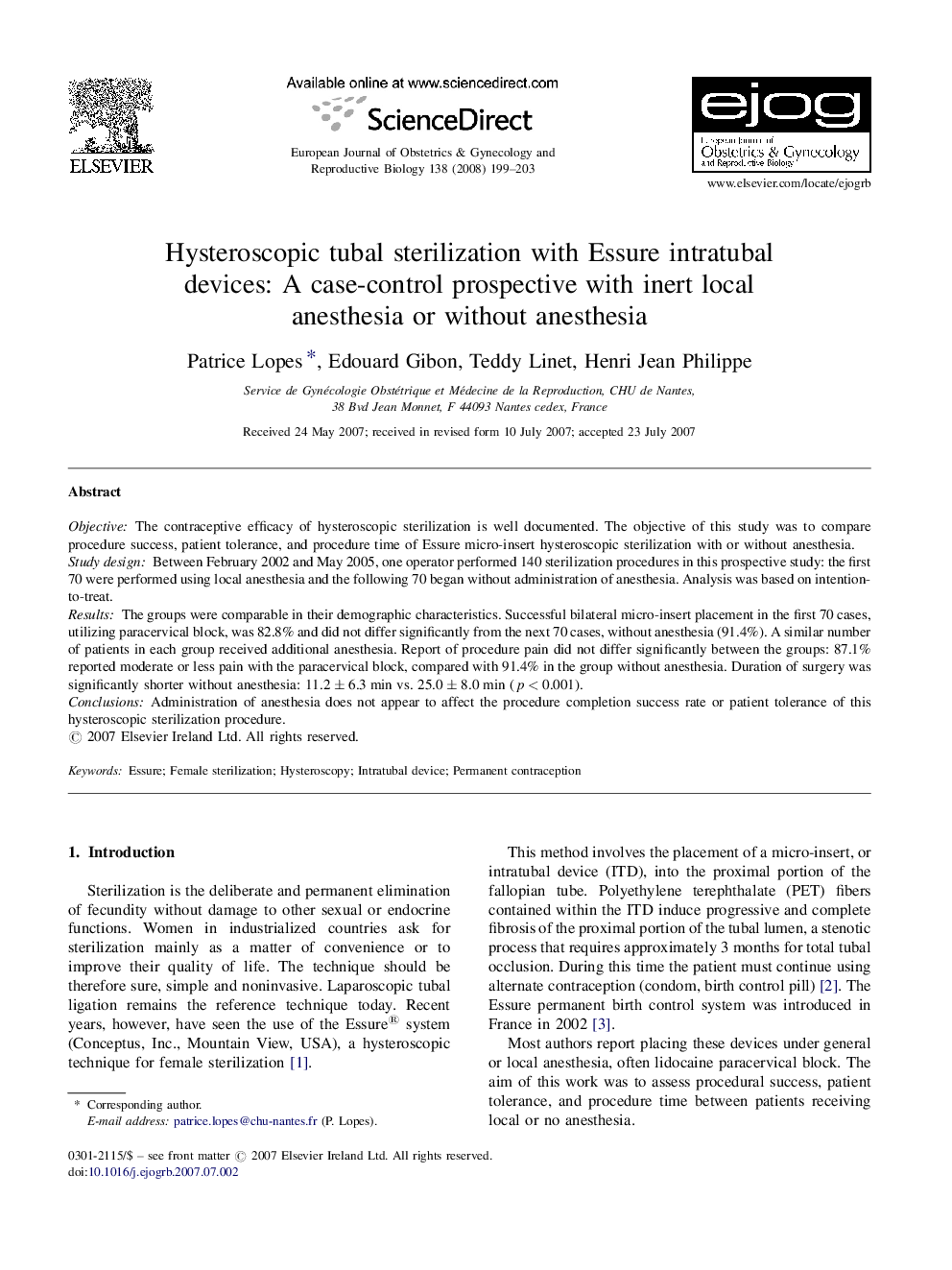| Article ID | Journal | Published Year | Pages | File Type |
|---|---|---|---|---|
| 3921811 | European Journal of Obstetrics & Gynecology and Reproductive Biology | 2008 | 5 Pages |
ObjectiveThe contraceptive efficacy of hysteroscopic sterilization is well documented. The objective of this study was to compare procedure success, patient tolerance, and procedure time of Essure micro-insert hysteroscopic sterilization with or without anesthesia.Study designBetween February 2002 and May 2005, one operator performed 140 sterilization procedures in this prospective study: the first 70 were performed using local anesthesia and the following 70 began without administration of anesthesia. Analysis was based on intention-to-treat.ResultsThe groups were comparable in their demographic characteristics. Successful bilateral micro-insert placement in the first 70 cases, utilizing paracervical block, was 82.8% and did not differ significantly from the next 70 cases, without anesthesia (91.4%). A similar number of patients in each group received additional anesthesia. Report of procedure pain did not differ significantly between the groups: 87.1% reported moderate or less pain with the paracervical block, compared with 91.4% in the group without anesthesia. Duration of surgery was significantly shorter without anesthesia: 11.2 ± 6.3 min vs. 25.0 ± 8.0 min (p < 0.001).ConclusionsAdministration of anesthesia does not appear to affect the procedure completion success rate or patient tolerance of this hysteroscopic sterilization procedure.
